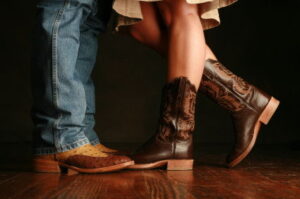DANCE STYLES WE OFFER
We offer Nightclub dances to traditional Ballroom dances. Ballroom includes dances such as Waltz, Foxtrot, Tango, Cha Cha Cha, Rumba, Bolero, Mambo, Swing, Paso Doble, Jive, and Samba. "Ballroom" is a generic word to describe a formal partnered dance performed or competed in a studio setting. This is different than a "Street" dance such as Salsa, Bachata or Lindy Hop. Dancesport is a highly stylized form of competitive ballroom dancing as seen on TV is a more disciplined form of dance. This style can take your dancing to a higher level with endless possibilities, and just as much fun as social dancing.
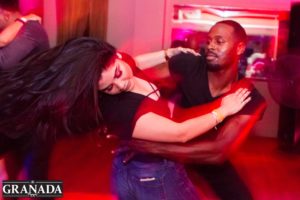
SALSA
Salsa refers to a fusion of informal dance styles having roots in the Caribbean (especially in Cuba and Puerto Rico), Latin and North America. The dance originated through the mixture of Mambo, Danzón, Guaguancó, Cuban Son, and other typical Cuban dance forms. There is a strong African influence in the music as well as the dance. Salsa is one of the world's most famous dances. Everyone can get wrapped up in the sensation that Salsa moves create on the dance floor.
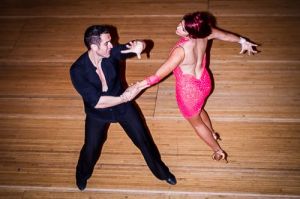
SAMBA
Samba originated in Brazil but had African and European roots, and as such, served as Brazil's counterpart to American Jazz. To many people it images of Brazil and Carnival. A fun solo or partner dance, Samba is free-flowing, energetic, and upbeat. Samba involves some fast and fancy footwork, and a bouncing action through the bending and straightening of the knees. Samba can be danced competitively, but is also a fun and relatively straightforward style for beginning dancers to pick up.
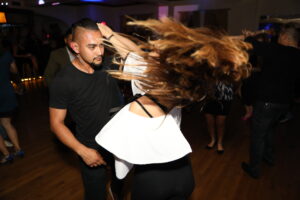
BACHATA
Bachata music originated from the Dominican Republic. This dance is achieved with a walking Cuban hip motion, and a unique "pop". The dance is performed both in open position and in closed position depending on the setting and mood of the partners. Similar to Merengue, dips are not original to the dance and turns are done infrequently.
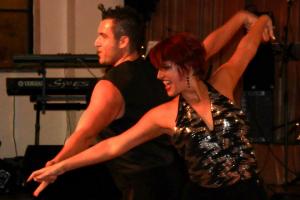
CHA CHA
Cha Cha is a Cuban dance is an offshoot of Mambo and was first popularized in the mid-1950's. This rhythm was developed from the danzón by a syncopation of the fourth beat. Energetic, stylish, and cheeky, the cha-cha is a perfect partner dance for everyone. Dancers of all levels can have a great time learning the basics or mastering the fine points.
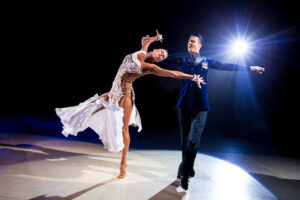
VIENNESE WALTZ
Viennese Waltz will have dancers turning and twirling around the dance floor twice as fast as the more subdued standard Waltzes. Intermediate and advanced dancers looking for a challenge will enjoy this aristocratic and athletic dance. Today, the Viennese Waltz is still performed at the world famous annual Viennese Opera Ball, but is known to cause a sensation on dance floors the world over.
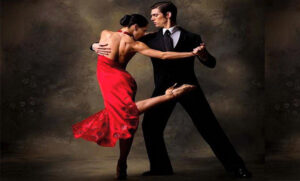
ARGENTINE TANGO
Argentine Tango is the original version of the Tango, the intense and magnetic Argentine Tango boasts a dramatic flair. Its emphasis rests on the embrace, which can range from open to closed at the chest, and is typical of the more traditional style. Feet are usually kept close to the floor as the dancers seemingly glide to the music. This dance form will ignite your passion for dance.
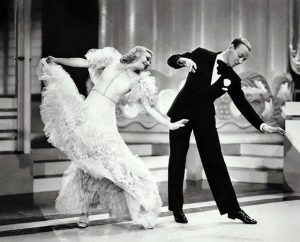
FOXTROT
Foxtrot is a fun and easy dance to learn, the Foxtrot can be danced to a wide variety of music. Foxtrot can be danced to big band, swing, or 50's rock and roll. Our popular dance class will have you twirling and turning on the dance floor with grace and ease. The Foxtrot is great for beginners and can be danced on crowded dance floors at parties and weddings. We offer two styles of the Foxtrot: American and International. The International Foxtrot is a subdued, smooth, and flowing motion, while American Smooth Foxtrot is upbeat and energetic.
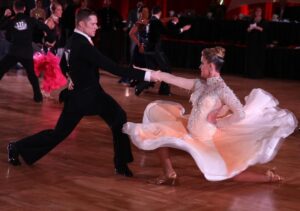
TANGO
Tango is steamy and sultry dance has been enthralling audiences since its introduction. Ballroom Tango has two forms: the American Style and the International Style. American style uses larger movements to highlight an exuberant expression of passion, while the International Style is more closely held. You'll establish confident footwork and a flair for performance.
![[ File # csp16988464, License # 3291314 ]
Licensed through http://www.canstockphoto.com in accordance with the End User License Agreement (http://www.canstockphoto.com/legal.php)
(c) Can Stock Photo Inc. / labamba](https://www.thegranadala.com/wp-content/uploads/2020/06/fun_dance_style2-300x200.jpg)
RUMBA
Rumba is a dance organically related to the rumba genre of Afro-Cuban music. Throughout the history one may trace several styles of dances called "rumba". With its easy pace and fluid, seductive movements, Rumba is an attractive style for dancers of all abilities. The slowest of the competition International Latin dances, Rumba is distinguished by its romantic feel and continuous flowing movement, exemplified by a sensuous swaying of the hips. Styles of Rumba taught is International Latin Rumba & American style box Rumba
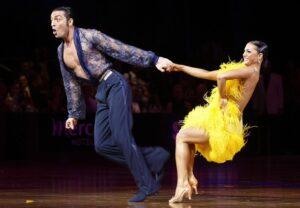
JIVE
Jive is the European version of East Coast swing and Jitterbug. Six and eight count patterns make up this dance, as in East Coast swing but it is quite bouncy with very sharp kicks and flicks. Unlike East Coast swing, Jive is danced to faster tempo swing music and is meant for competitive style dancing.
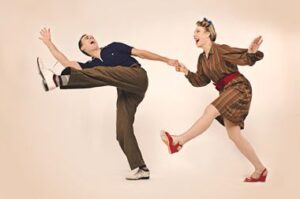
LINDY HOP
Lindy Hop is a sporty, athletic form of partner dancing. Instead of dancing in an upright, elegant posture, Lindy Hop dancers maintain an active, athletic stance that keeps their legs in constant movement. There are two main styles of Lindy Hop, Savoy style, and G.I. style
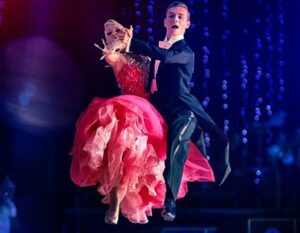
QUICKSTEP
Quickstep is an upbeat, exuberant, and dynamic, the Quickstep is an excellent style for dancers of intermediate skill level, or for those who have mastered basic slow-tempo dances. The goal of the Quickstep is for dancers to maintain a graceful form with quick and precise movements, while maintaining an effortless and elegant demeanor. First danced to ragtime jazz music, the Quickstep will have you hopping, skipping, and gliding all the way across the dance floor.
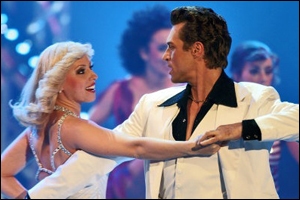
HUSTLE
Hustle is the couple dance form of hustle is usually called New York Hustle or Latin Hustle. It has some resemblance to, and steps in common with, swing and salsa dancing. As in the Latin dances, couples tend to move within a "spot" on the dance floor, as opposed to following a line of dance as in foxtrot, or as opposed to tracking within a slot as in West Coast Swing or LA Hustle.
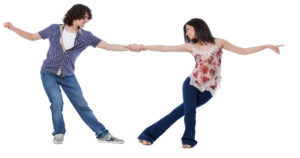
WEST COAST SWING
West Coast Swing (WCS) emerged as a variation of Lindy Hop but is infused with unique California style. It focuses on partner dancing and utilizes a distinctive elastic feel and look derived from its extension-compression technique. This is a sexy and smooth swing style that can be danced to R&B, Blues, top-40 and Contemporary Hip-Hop music sounds, disco and even country music. Slick, sexy, and smooth, The fun of West Coast Swing is improvising and freely moving to the flow of the music.
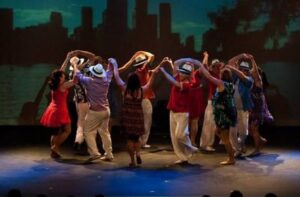
CASINO RUEDA
Casino Rueda is a particular type of Salsa that is danced with a group of people. Pairs of dancers form a circle, with dance moves called out by one person, a caller (or 'Líder' or 'cantante' in Spanish). Many moves have hand signs to complement the calls; these are useful in noisy venues, where spoken calls might not be easily heard. Many moves involve the swapping of partners. This is a very social dance that requires a prior basic understanding of salsa.
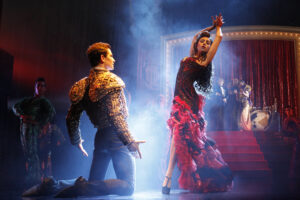
PASO DOBLE
Paso Doble is a theatrical Spanish dance that characterizes the man as the matador and the lady as his cape. Based on Flamenco dancing, the character of the dance is arrogant and passionate. Paso Doble is not a social dance but is danced competitively in the International Latin style.
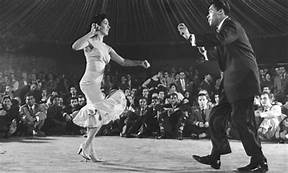
MAMBO
Mambo is a Latin dance, originated in Cuba and forms a partnership with the music of the same name. Mambo music influenced numerous American Jazz musicians because of the cross pollination that Italian American gangsters provided through their ownership of multiple clubs in Cuba and across the U.S.
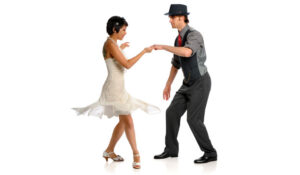
EAST COAST SWING
East Coast Swing (ECS) was developed in the 1940s, the vivacious East Coast Swing is based upon the Lindy Hop & can be referred to by many different names in different regions of the US and the World. It has alternatively been called Eastern Swing, Jitterbug, American Swing, Lindy (not to be confused with Lindy Hop) and Triple Swing. Other variants of East Coast Swing that use altered footwork forms are known as Single Swing or "Single-step Swing" (where the triple step is replaced by a single step forming a slow, slow, quick, quick rhythm common to Foxtrot), and Double Swing (using a tap-step footwork pattern). The East Coast Swing is the perfect beginner's Swing dance, and will establish the basic swing tempo and movements. This high-spirited dance will have you skipping, rocking, and twisting the night away on the dance floor.
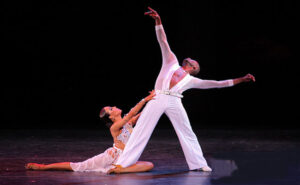
BOLERO
Bolero music is slow and romantic, often accompanied by Spanish vocals and soft percussion. Believed to have evolved from Spanish and Afro-Cuban folk dances, Bolero is often referred to as the Cuban Dance of Love. It is a dance that captures sensuality, romance and slow rhythmic movements.
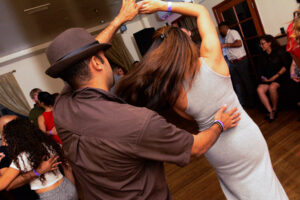
MERENGUE
Merengue is a type of music and dance from Dominican Republic. The beat of the music is steady, upbeat, and easy to follow, and its enchanting pulse will have you on the floor all night. Don't be surprised if you hear accordion, metal scraper, or tambora drum playing when you learn this sensual shuffle, and don't be surprised when you have a great time learning the steps!
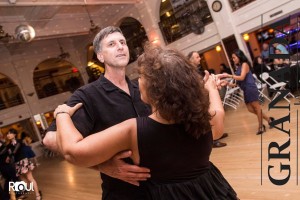
NIGHTCLUB TWO-STEP
Nightclub Two Step was initially developed by Buddy Schwimmer in the mid-1960s. The dance is also known as "Two Step" and was "one of the most popular forms of contemporary social dance" as a Disco Couples Dance in 1978. It is frequently danced to mid-tempo ballads in 4/4 time that have a characteristic Quick-Quick-Slow beat. A classic example is the song "Lady In Red"
